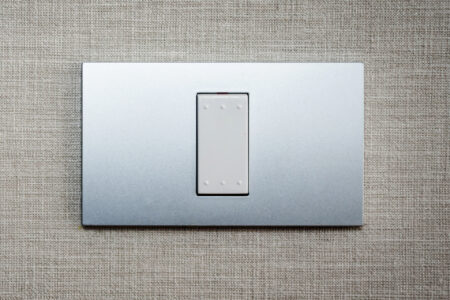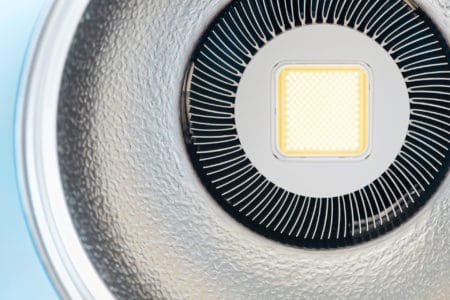Some LED lamps emit their light with a delay after flipping the light switch. Depending on the duration of the switch-on delay, this can be quite annoying. Here you can find out the background of the delay and how to avoid it when buying a light bulb.
What is the LED power-up delay?
You might be familiar with this scenario: You have bought new LED lamps or luminaires and are switching them on for the first time. After flipping the light switch, you expect the new LED lamp to light up immediately at full brightness. Instead, half an eternity passes by before the LED emits its light. The disappointment is great. Is the LED lamp defective or is the technology not yet sophisticated?
The effect you are observing is often referred to as the power-up delay. However, the following terms are often used in this context:
- LED switch-on time
- LED switch-on delay
- LED turn-on time
The power-up delay is annoying
From the old incandescent bulbs we were used to the fact that these light up immediately after switching on with their full brightness. However, we knew from the energy saving lamps available in the meantime that they have a certain warm-up time. Some of them also take several minutes to reach full brightness. Such delays are very annoying at many locations.
The switch-on delay is particularly annoying in places and rooms where the light is only switched on for a short time. This can be a corridor or a stairwell lighting, for example. Or the storage room and the shed in the garden, where you only want to look for something shortly. In general it is desirable to be able to switch on the light without delay in all places in your household.
Which power-on time is normal?
As you will learn in the next section, the start-up times for LED lamps are fortunately not caused by design. However, you may have purchased an LED lamp with a power-on delay. Even if this seems to last for half an eternity, in practice it will probably only be a few 100 milliseconds long. The maximum time will be 1 to 2 seconds.
Is this delay normal?
When I converted my lighting to LED a few years ago, I also found several models with a certain switch-on time. Fortunately, the switch-on delay is not due to the LED itself. The time delay is caused by the electronic circuit inside the LED light. With a qualitative construction of this circuit there is no visible switch-on delay.
What causes a switch-on delay?
An LED light consists of several components: One or more LEDs, an LED driver and a power supply. The light emitting diode is a semiconductor component and emits its light virtually without time delay after the power supply is applied. The reason for a possible switch-on delay is the electronic circuit consisting of a switched power supply and driver circuit.
The switching power supply transforms the 120V mains supply to a low voltage for the LED driver. This then generates a constant current for the operation of the LED. An unfavorable circuit design can cause some capacitors being slowly charged after switching on, before the driver releases the current for the LED. The result is the known switch-on delay of the LED.
LED transformer with a switch-on delay
Even the operation of low voltage LED lamps can result in a switch-on delay. This is caused by the LED transformer, which can be responsible for delays of up to 2 seconds after the light switch has been pressed. The reason for this delay is the same as with a line-voltage LED light source.
The circuit in an LED transformer has several capacitors for the intermediate storage of energy. The circuit design of some transformers include capacitors with a large capacity, which charge relatively slowly after switching on. Only after the charging process is completed the output voltage of the transformer is released for the connected low-voltage LEDs.
What to pay attention to before purchasing?
The power-up delay should not exceed 0.5 seconds. The start-up time until 60% brightness is reached is often indicated on the packaging or in the online shop. However, it may happen that shopkeepers with longer power-on times are still available in some stores.
If the power-on time is not specified, you have a good chance of returning the LED lamp. There is no fundamental difference between LED lights from known brands and no-name manufacturers. There are just as many slow lamps from known brands and fast no-name lamps as vice versa.
If a light bulb has a power-up time of 0.5 seconds, the delay after flipping the light switch is already noticeable. How annoying this is depends on your own feeling. However, there are also LED lamps and illuminants with a power-on time of only 0.1 seconds. These light up immediately after switching on without any noticeable delay.
If the information on the packaging or in the shop is missing, there is a high risk of catching a slow-moving item with an unknown switch-on delay.
Conclusion
A switch-on delay for LED lights is annoying. Now you know that this luckily does not happen by design. This behavior only occurs with relatively few lamps and luminaires. When buying LED lights, always pay attention to the specified power-up time. So you will not experience any surprises later when flipping the light switch on.






